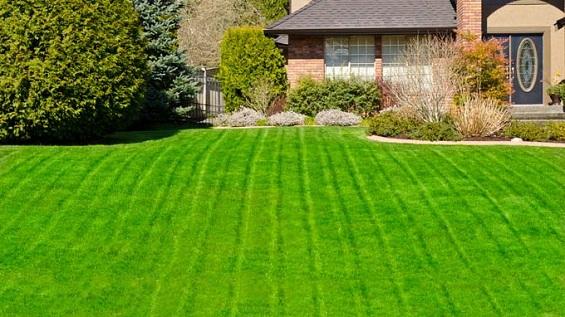A lush and vibrant lawn is often the centerpiece of a well-kept outdoor space. The foundation of a beautiful lawn begins with choosing the right type of grass. With a plethora of grass varieties available, each possessing distinct characteristics, it’s essential to make informed decisions based on your local climate, soil conditions, and maintenance preferences. In this guide, we’ll introduce you to some of the best choices of grass for creating a stunning and healthy lawn.

Selecting the Finest Grass Varieties for a Gorgeous Lawn
-
Kentucky Bluegrass (Poa pratensis):
Kentucky Bluegrass is a popular choice known for its fine texture and rich green color. It thrives in cool climates and is well-suited for lawns that receive plenty of sunlight. This grass variety forms a dense, lush carpet and is known for its ability to self-repair through rhizome growth. It’s a great option for regions with cold winters and moderate temperatures.
-
Bermuda Grass (Cynodon dactylon):
Bermuda Grass is a warm-season grass that excels in hot and sunny climates. It has excellent drought tolerance and can withstand foot traffic, making it an ideal choice for lawns that see a lot of activity. Bermuda Grass has a dense growth pattern and boasts a beautiful blue-green color during its active growing season.
-
Zoysia Grass (Zoysia spp.):
Zoysia Grass is another warm-season option that offers both beauty and durability. It forms a dense, carpet-like turf that is highly resistant to weeds and pests. Zoysia Grass is known for its ability to tolerate heat, drought, and heavy foot traffic. It also exhibits good cold tolerance in some varieties.
-
Fescue Grass (Festuca spp.):
Fescue Grass encompasses a group of cool-season grasses that are well-suited for lawns in temperate climates. They can tolerate shade better than many other grass varieties, making them a great choice for areas with partial sunlight. Fescue Grass varieties, such as tall fescue and fine fescue, offer different textures and growth habits to suit various lawn preferences.
-
St. Augustine Grass (Stenotaphrum secundatum):
St. Augustine Grass is a warm-season grass that thrives in warm, coastal areas with high humidity. It has a coarse texture and a vibrant green color. St. Augustine Grass is known for its rapid growth and ability to establish quickly. It’s well-suited for lawns in regions with mild winters and frequent rain.
-
Ryegrass (Lolium spp.):
Ryegrass is a cool-season grass that is often used for overseeding existing lawns in the fall to maintain green color during the winter months. It germinates quickly and provides a temporary solution for maintaining a green lawn in colder climates. Ryegrass is commonly used in blends with other grass varieties to achieve year-round color.
-
Buffalo Grass (Buchloë dactyloides):
Buffalo Grass is a warm-season grass native to North America and is well-suited for low-maintenance lawns. It has a fine texture and a distinctive blue-green color. Buffalo Grass is drought-tolerant, requires minimal mowing, and is suitable for regions with hot, arid climates.
Selecting the Right Grass:
The best grass for your lawn depends on your climate, local conditions, and the level of maintenance you’re willing to provide. Before making a decision, consider factors such as temperature range, rainfall, sunlight availability, and your lawn’s purpose (aesthetic, recreational, etc.). Consulting with local experts or professionals can provide valuable insights into the most suitable grass varieties for your region. By selecting the right grass for your lawn, you’ll be on your way to cultivating a beautiful and thriving outdoor space that enhances your property’s overall charm.